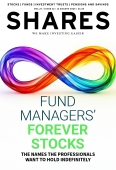Archived article
Please note that tax, investment, pension and ISA rules can change and the information and any views contained in this article may now be inaccurate.
How can I avoid falling foul of HMRC recycling rules?

I’m planning on withdrawing around £28,000 from my SIPP around January 2026 but don’t want to fall foul of HMRC’s tax recycling rules with my pension contributions during this tax year.
I think I get the idea of not increasing my cumulative contributions (triggering tax relief) ‘significantly’ (30% more than would be expected) over five years (so in my case from 2023/24 to 2027/28).
But what I’m not sure about is exactly which year’s past contributions are considered to be ‘expected’. Is it just the one year preceding the five-year ‘test’ period (so 2022/23 for me)? Or maybe they’d be looking at the average of, say, the previous three or four years (going back to 2020/21 or 2019/20 in my case)?
Or would they go back even further than that, when my contributions were much lower? The figures come out differently in each case, as my contributions in each tax year have varied quite widely since 2017/18.
Does it help if I decide not to contribute anything at all to my SIPP for the next two years or so (thus reducing the cumulative ‘increase’ over whatever is ‘expected’ and therefore being ‘on the safe side’)?
Anonymous
Rachel Vahey, AJ Bell Head of Public Policy, says:
I’ll start by explaining what is meant by ‘HMRC’s recycling rules’.
These rules aim to combat the potential issue of people ‘double dipping’ on tax relief by taking their tax-free cash and then immediately ploughing it back into their pension to gain more tax relief.
HMRC obviously want to prevent this from happening so it has devised a set of conditions to determine whether the tax-free cash (or pension commencement lump sum (PCLS) to give it its technical name) should be considered as ‘recycled’. Broadly these are:
- the PCLS (and any other PCLSs received in a 12-month period) must be more than £7,500;
- the cumulative amount of additional contributions is over 30% of the amount of the PCLS; and
- the contributions for the member are significantly above what they would normally be.
When judging whether the rules have been broken, HMRC isn’t just looking at whether the contributions have increased after the PCLS has been taken, it also looks at the period before. In fact, the increase in contributions is tested on a cumulative basis over five years; two years before the PCLS is taken, the tax year the PCLS was made and the two years following the payment.
You are planning on taking a PCLS which is more than £7,500, meeting the first condition. As you are taking it in this tax year – 2025-26 – HMRC will look at the contributions paid in the period from 2023-24 to 2027-28.
It will be looking for a significant increase. For example, if you weren’t contributing anything in the first two years but then started paying £20,000 in the third year when you took your PCLS and for the next two tax years, that might pique HMRC’s interest. But there are no hard and fast rules.
However, if your contributions naturally fluctuate over the five-year period – say because you were self-employed – then that could probably be explained.
Stopping contributions altogether after taking the PCLS isn’t necessarily going to mean ruling out recycling if contributions increased significantly just before you accessed the pension.
Even if there is a sudden spike in contributions this may not raise any flags if the pension saver has been following a consistent trend of pension saving. This condition is more likely to catch those who contribute minimal amounts, take a PCLS and markedly increase their contributions afterwards.
HMRC is also looking for evidence that the increase in contributions is a direct result of the PCLS. If you have a specific use for the PCLS then you may want to keep a written record of that to justify your actions.
But there is also a final condition that has to be satisfied before a PCLS can be said to be recycled. And that is whether the recycling was planned – in other words was it a conscious decision?
It sounds like in your case this is a no, especially if you have a specific use for the PCLS. As the barrier between accumulation and decumulation blurs even further, it’s likely there are going to be many more of these cases where it could be argued that recycling has taken place, as people take tax-free cash at the same time as contributing to their pension.
This could mean a combined effective tax rate of 52% if they are a basic rate taxpayer, 64% if they are a higher rate taxpayer or 67% if they are an additional rate taxpayer.
DO YOU HAVE A QUESTION ON RETIREMENT ISSUES?
Send an email to askrachel@ajbell.co.uk with the words ‘Retirement question’ in the subject line. We’ll do our best to respond in a future edition of Shares.
Please note, we only provide information and we do not provide financial advice. If you’re unsure please consult a suitably qualified financial adviser. We cannot comment on individual investment portfolios.
Important information:
These articles are provided by Shares magazine which is published by AJ Bell Media, a part of AJ Bell. Shares is not written by AJ Bell.
Shares is provided for your general information and use and is not a personal recommendation to invest. It is not intended to be relied upon by you in making or not making any investment decisions. The investments referred to in these articles will not be suitable for all investors. If in doubt please seek appropriate independent financial advice.
Investors acting on the information in these articles do so at their own risk and AJ Bell Media and its staff do not accept liability for losses suffered by investors as a result of their investment decisions.
Issue contents
Exchange-Traded Funds
Feature
Great Ideas
News
- Eli Lilly shares under pressure after disappointing clinical trial results
- Recruiter Hays set to update expectations with shares at decade-low
- Record numbers of US companies are beating revenue and earnings forecasts
- Fresnillo up 180% year-to-date after latest strong results
- All eyes on second-quarter retail bellwether Walmart
- Bellway brings a ray of light to the housebuilders with its half-year update
 magazine
magazine








